|
|
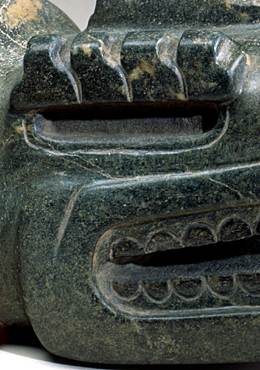
|
Maya kings reigned over a cosmological domain comprising three vertical levels: the celestial upper world, associated with supernatural beings and ancestors; the earthly middle world, the place of human existence; and the watery underworld, which could be entered through caves and still bodies of water. The crocodile represented the surface of the earth floating in the primordial sea.
Crocodile |
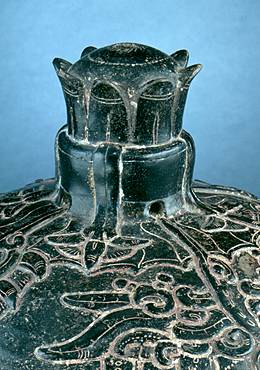
|
The lid of this carved blackware vessel (seen here in detail) has a handle in the shape of a water lily. Water lilies, associated with still water, symbolize agricultural fertility due to their presence in canals that sustain raised fields.
Carved Blackware Vessel with Lid and Water Lily-Shaped Handle. |
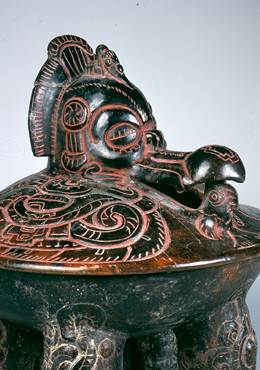
|
The features of this unusual crested water bird (seen in detail on another lidded vessel) imply an otherworldly being, because its beak has a rounded knob marked by a quatrefoil, an ancient emblem that often designates portals to the supernatural realm.
Lidded Vessel with Crested Water Bird |
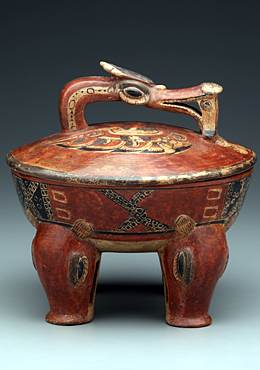
|
Elegant long-necked cormorants raising fish from the surface of the water are a common theme on Early Classic vessels. Here, the vessel rests on four naturalistic peccary heads, another aspect of such tetrapods.
Quadruped Vessel with Peccary Feet and Lid with Cormorant and Fish Handle (detail). |
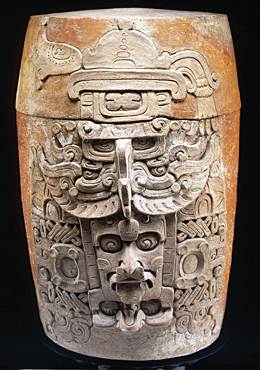
|
This lidded vessel was placed as a cache during a building-dedication ritual. It portrays a deity from the Palenque triad known as GI, whose characteristic features include a central shark's tooth and fish fins. A mythological bird rests on the deity's head.
Cache Urn, Guatemala, AD 250-450 |
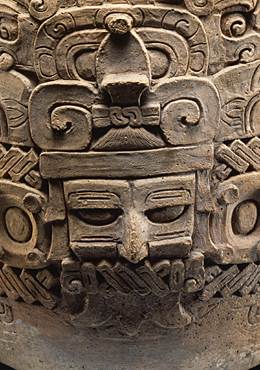
|
This urn (seen in detail) is also from a building-dedication cache. It portrays a deity whose mouth is covered by a woven mat from which hangs a trident motif.
Cache Urn |
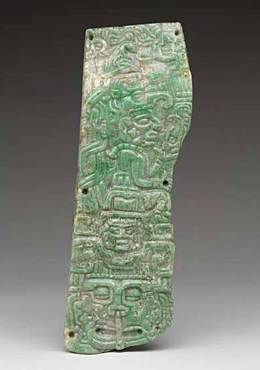
|
This bar pendant reveals the manner in which kings were aligned with supernatural locations. It depicts a king seated upon a personified cleft-headed mountain that may be the primordial Mountain of Sustenance. The Sun God emerges from the cleft. A cacao tree, symbol of abundance and wealth, climbs up behind the seated king, and an ancestral figure floats above him, providing supernatural sanction for his royal position.
Bar Pendant Depicting Lord |
top home |
Copyright 2005 Los Angeles County Museum of Art